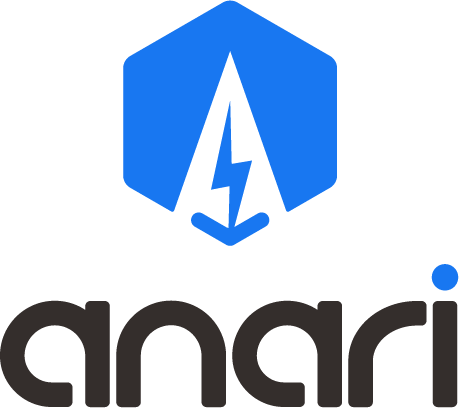
The Philippines' electric vehicle (EV) charging infrastructure sector is gaining traction within Southeast Asia's evolving mobility landscape, with the broader EV market projected to grow at a CAGR of over 25% through 2032, driven by hybrid dominance and ambitious targets for 6.6 million EVs by 2030. Anchored by the Electric Vehicle Industry Development Act (EVIDA) and the Comprehensive Roadmap for the Electric Vehicle Industry (CREVI), policies aim for 7,300 charging stations by 2028, yet current deployment stands at approximately 962 public stations as of mid-2025. Market expansion is supported by public-private partnerships (PPPs) and renewable energy integration under the Power Development Plan (PDP) 2023-2050, potentially unlocking opportunities in green jobs and regional supply chains. However, challenges like grid constraints, policy fragmentation, and infrastructure disparities could hinder progress without coordinated reforms. Insights from government frameworks, such as CREVI and the Charging Infrastructure Development Plan (CIDP), highlight the imperative for scalable, resilient charging solutions to bridge adoption gaps, positioning the Philippines to catch up with ASEAN leaders like Thailand and Singapore. Advanced AC and DC technologies, featuring smart load management and multi-standard compatibility, are well-suited to enhance grid resilience and accessibility in this tropical, archipelagic context.
The Philippines' pursuit of sustainable transport under its Nationally Determined Contributions (NDCs) to reduce emissions by 75% by 2030 elevates EV charging infrastructure as a critical enabler for economic resilience and environmental goals. Amid Southeast Asia's heterogeneous EV landscape—where Thailand leads in production and Singapore in urban density—the Philippines targets a 50% EV share in vehicle sales by 2040, necessitating robust networks to support projected growth from 18,690 EV units sold in 2025 to over 20,000 in 2025. This report examines the sector through policy lenses, market dynamics, opportunities, and challenges, drawing profound insights from EVIDA, CREVI, PDP 2023-2050, and international benchmarks like the IEA's Global EV Outlook. As of mid-2025, the EV market embeds charging infrastructure within a valuation trajectory toward significant expansion, where solutions like high-efficiency AC wallboxes and DC fast chargers with intelligent features can address unique needs such as typhoon-resistant designs and variable grid loads in island settings.
The Philippines' EV charging policies integrate fiscal incentives with regulatory mandates, reflecting a strategic response to Southeast Asia's competitive dynamics while emphasizing local content and renewable synergy. EVIDA (RA 11697, 2022) forms the cornerstone, mandating a 10% EV fleet share for government and corporates by 2040 and empowering local government units (LGUs) for infrastructure oversight, with tax exemptions on EVs and components extended through zero-tariff executive orders. CREVI complements this by setting deployment targets—7,300 stations by 2028 under a clean energy scenario—while the CIDP integrates charging plans into distribution utilities' development frameworks, ensuring grid-aligned expansion.
The PDP 2023-2050 shifts toward 35% renewables by 2030, facilitating EV loads through smart grid upgrades and unbundled charging fees to enhance affordability. Additional enablers include the Renewable Energy Act (2008) for green charging and the Energy Efficiency and Conservation Act (2019) for project incentives. Insights from these frameworks reveal a maturation from incentive-heavy approaches to ecosystem-building, yet fragmentation across agencies like the Department of Energy (DOE) and LGUs risks delays, underscoring the need for a centralized authority akin to regional models in Vietnam's PDP8. This policy evolution prioritizes interoperability standards, favoring multi-standard chargers to accommodate diverse EV imports.
|
Key Policy Elements |
Description |
Impact on Charging Infrastructure |
|---|---|---|
|
EVIDA (2022) |
National framework with fleet mandates and incentives. |
Drives demand for public and private stations, supporting scalable DC networks. |
|
CREVI |
Targets 7,300 stations by 2028; annual updates. |
Guides strategic deployment, emphasizing AC solutions for residential growth. |
|
PDP 2023-2050 |
35% renewables by 2030; grid resilience focus. |
Enables hybrid solar-charging hubs, reducing loads via smart management. |
|
CIDP |
Integration into distribution plans. |
Ensures regulatory compliance for high-power installations with safety features. |
|
Zero-Tariff Extensions |
Exemptions on EVs and components until 2028. |
Lowers barriers, boosting adoption and need for robust, compatible chargers. |
By mid-2025, the Philippines hosts 962 public charging stations—421 AC, 59 DC, and 482 battery swapping units—with 169 accredited providers, marking a 5% increase from early 2025 but lagging regional peers like Thailand's 3,700 stations. EV adoption has accelerated, with sales projected at 20,000 units in 2025 amid a 7.6% overall vehicle market growth, dominated by hybrids at over 50% share. Urban centers like Metro Manila concentrate 70% of infrastructure, supporting e-tricycles and motorcycles that comprise the bulk of registrations.
Market segmentation highlights AC dominance for residential use, while DC expansion trails due to grid limitations. Insights from Statista and DOE data indicate maturity in private investments—e.g., SM Prime's 50 additional stations—but utilization averages below 40%, reflecting overcapacity in select areas amid range anxiety. Projections under CREVI foresee a 50% EV sales penetration by 2040, requiring CAGRs exceeding 30% in charging deployment. This status underscores a transition phase, where durable, weatherproof chargers with app-integrated controls can optimize tropical operations and bridge urban-rural divides.
Within Southeast Asia's EV surge—projected at 20% regional penetration by 2025—the Philippines offers avenues for accelerated growth through PPPs and innovation, targeting a 6.6 million EV fleet by 2030. CREVI's incentives and PDP's renewable push enable solar-integrated stations, potentially slashing costs by 20% and generating green jobs in maintenance and installation. Franchising models, like V-Green's offerings, democratize entry for locals, while ADB-funded projects aim for 1,700 stations.
High-potential segments include e-two-wheelers (25,000+ sales in 2025) and fleet electrification, aligning with ASEAN supply chains. Profound insights: Policy-driven ecosystems favor smart networks, where Gaia AC Series wallboxes (7.4-22kW) with plug-and-play and load-balancing features excel in residential scalability, and Aquila DC Series fast chargers with multi-standard support address interoperability, enhancing efficiency in humid, disaster-prone environments to capitalize on untapped rural demand.
The Philippines' charging sector confronts structural impediments mirroring Southeast Asian hurdles, potentially capping growth without reforms. Infrastructure deficits—only 962 stations for a growing EV base—fuel range anxiety, exacerbated by urban bias and typhoon vulnerabilities. Grid strains from aging systems risk overloads, as PDP upgrades lag ambitious targets, while high electricity costs erode profitability.
Policy overlaps and implementation gaps, including absent purchase subsidies and unclear standards, deter investments, compounded by talent shortages in battery and charger expertise. Affordability and battery concerns persist, with informal transport sectors facing just transition risks. Key insight: These challenges expose a mismatch between aspirational policies and execution capacity, necessitating grid assessments and inclusive incentives; resilient solutions like robust-safety DC chargers can mitigate downtime in archipelagic settings.
The Philippines' EV charging infrastructure is poised for expansion, leveraging EVIDA and CREVI to surpass current limitations and align with Southeast Asia's green mobility shift. Early achievements in station growth demonstrate policy impact, yet addressing grid and equity gaps is vital for 2030 targets. Opportunities in renewables and PPPs offer sustainable pathways, while challenges demand unified governance and innovation.
For global entities like Anari Energy (www.anariev.com), this environment suggests targeted deployments of Gaia AC Series for smart residential integration and Aquila DC Series for efficient public fast charging, leveraging their load-balancing, compatibility, and safety advantages to meet the Philippines' needs for reliable, climate-resilient infrastructure. Ultimately, evolving toward a cohesive ecosystem could position the Philippines as an ASEAN EV innovator, balancing growth with inclusivity.




